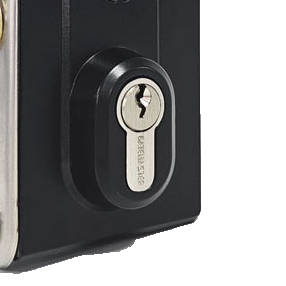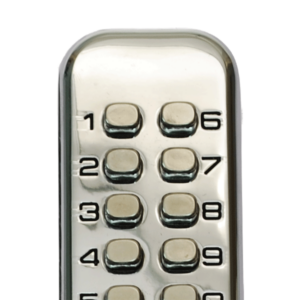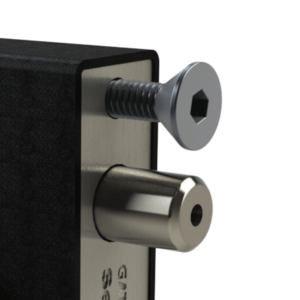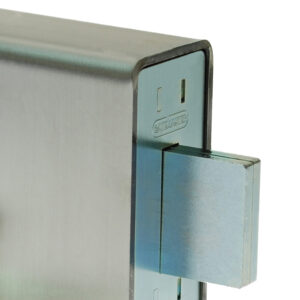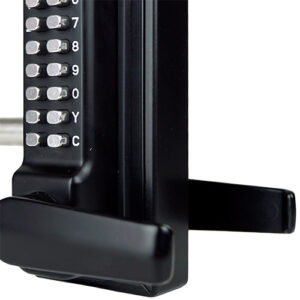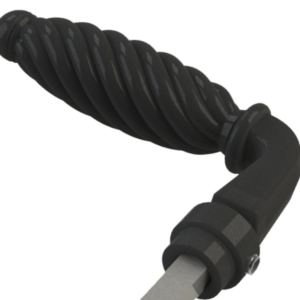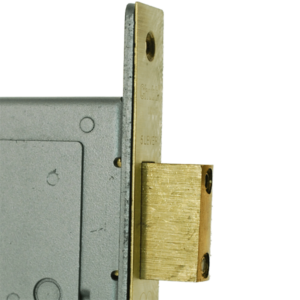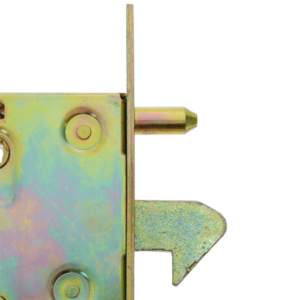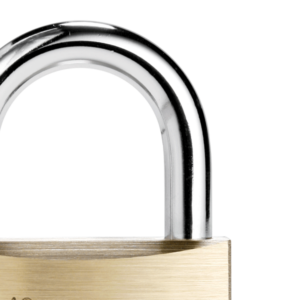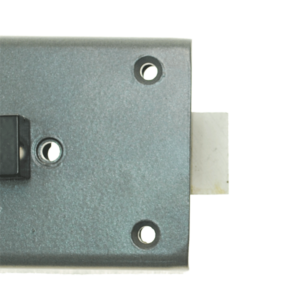Gate Locks
At Signet, we pride ourselves in being experts in gate hardware, specialising in a wide range of gate locks to suit every requirement. From outside garden gate locks and latches to industrial deadbolts, most of our selection is designed and manufactured by us, here in the UK. Every lock is tough, durable and smart whether you want to improve your security, reduce the amount of keys you carry or just want your gate to be top-of-the-line stylish there is a lock for you.
Signet products include locks designed for easy retro-fitting, like screw-fixed locks for wooden gates, and bolt-on locks for fitting onto metal gates. There are also weld-on options for securely fitting your lock into a metal surrounds.
Our range of digital locks, including our own Gatemaster range, can be bolted or welded to gates and doors, and are designed for simplicity and security in high-traffic areas where multiple keys are impractical. For added security we also provide Electronic Gate Lock Systems including electromagnetic locks and latches.
If you need hardware and accessories, Signet also stock hinges, handles and padlocks, to keep your gate operating smoothly and securely.
Not sure what you need? Your questions asked and answered in the beginner guide to gate locks:
Finding the right and best gate lock
Why are you having a gate/fence in the first place?
Before we start diving into the specifics of gates and which locks are suitable for which gate, it is important you keep the “why” in mind. Why did you decide to put up a gate and fence in the first place?
A common reason is of course security. As a home or business owner, you want to send a strong signal to outsiders to stay out and gates help you do that. The gate will be the first barrier for them to get through, so having a strong and secure gate lock goes a long way.
Equally important to many is safety as gates and fences also act as a barrier to busy roads or areas. You might be putting it up to make sure your children can play in the garden without you worrying about them running onto a road.
Other reasons are to get privacy, increase curb appeal, keep unauthorised vehicles and unwanted animals out. These are just a few reasons for getting a gate and you want to take this into account when finding the right lock and gate hardware for your gate.
Another thing to keep in mind as we dive deeper into the world of locks and gates is your budget. In addition to the purpose of the gate, consider the price you are willing to pay to achieve it. For example, are you looking for a temporary or a more permanent solution, or could it be done by securing the gate with a chain and a padlock or a cheaper, less substantial option?
Where?
The next step in finding the right gate lock is to think about where the gate will be located. There are many different considerations to make so we will run through a few of them to get you on the right track.
Geographical location: Will the gate be located in a climate that is especially corrosive like close to the sea or in a place where it rains a lot? In these instances, choosing a lock that is made from stainless steel or another corrosion-resistant material is a smart choice, as humid salty sea air corrodes metal roughly 10 times faster than normal air.
Commercial or residential? This can influence both the style of the lock required and also the required quality and convenience factors, depending on how frequently the lock is used. For example, in a commercial space like an industrial estate, large factory, or warehouse, the lock will most likely be getting more frequent use than if it is used on your gate at home.
For parking lots or large industrial facilities, sliding gates are commonly used and this will affect which types and styles of lock you can use, as not all locks will work for sliding gates. Knowing the purpose and type of gate is therefore a crucial consideration when choosing the right lock for your gate.
For large sites, you might need to be able to lock or unlock the gate from inside the building, using an intercom system for example. This means you need to get power to the gate, but by using a gate automation specialist you can have a range of convenient options depending on your budget and level of security needed.
Who and how many?
We’ve covered why and where, so it only makes sense to touch upon the who and how many next.
The who of course refers to the people who will be using the gate. If the gate is for your home, think about who will be using it and how. Will your children require access when they get home from school? Or will you need to have a hold-open function to let your handyman in and out when working? Does anyone with a wheelchair or disability need to use the gate?
There are a wide range of locks out there with functions that are worth including to make the gate work in the way you need. It might be a good idea to have a quick exit push pad or a panic bar on the inside if the gate is in a location where a large number of people need to leave in case of an emergency. Or you might want a keypad access to avoid paying for new keys to be cut and handed out if residents of a block of flats lose their key.
What is the material of the gate?
We now move onto the specifics of the actual gate as the material of the gate will determine how the lock can be fitted to the gate. If it is a metal gate, you have the choice between weld-in, bolt-on, morticed, or surface-fixed lock; all four types have their own benefits. Please see the article ‘best metal gate locks‘ for more information
For wooden gates, your options are more limited. We recommend using surface-fixed locks for wooden gates, as they can easily be fitted with the appropriate wood screws. The other option is to mortice a lock into a wooden gate. This can be more difficult, so you might need an experienced gate manufacturer or someone with carpentry skills, but it can be a very unobtrusive and neat solution. If you need more advice on this please see the article on ‘best locks to secure a wooden gate with.’
But it is not just the material of the gate that matters. Every lock has a latch or a deadbolt which needs a receiving slot or a keep. This will be attached to the gate post, and the construction of this can vary from project to project, ranging from brick, steel, wood, or concrete posts to name a few. So, make sure to check how the keep or receiving slot is fixed and ensure you have the right fixing kit to install it correctly.
What is the style of the gate?
When you decided the style of the gate, you probably did so based on personal preference or the style of the surrounding buildings. You might then also have a preference to which lock type you want.
Weld-in locks and mortice locks are integrated into the gate frame itself, with a weld-in lock box being welded into the gate frame before galvanising and painting and a mortice lock is inserted into a pre-cut slot in the gate frame (can be used on metal and wooden gates). These two types of locks are therefore popular for gates where you don’t want the lock to be noticed, such as traditional wrought iron gates where the lock shouldn’t interfere with the ornate design, or on gates with a minimalist or modern design.
For bolt-on and surface-fixed locks, they are more on show as they are either bolted onto the side of the gate or fixed to the front and back of the gate. Bolt-on locks are more suited for metal gates whereas surface-fixed locks are more frequently used on wooden gates.
Your choice of lock therefore varies whether you want your lock to be more hidden and incorporated into the gate or if you want a modern gate lock look that is easy and quick to fit.
Another consideration where relevant is which handles to choose, as these can change the overall look of the lock. If the chosen style for a gate is sleek and modern in metal, a lock with ornate handles won’t fit and will stand out. Instead, a modern gate should have a modern and simple handle to go with it. For traditional gates, a simple handle might look odd, and a more twisted or ornamental handle will be better suited.
Small details such as this might seem less relevant, however personal style and preferences also play into this and offering these different handle options mean a simple lock can suit both traditional, modern, and even unconventional or custom-designed gates.
The distance between gate and gate post / Throw
The distance between the gate and the gate post determines what length your lock will need. The bigger distance you have, the bigger throw, i.e., you need the latch bolt to extend more to reach the receiving end or keep on the gate post.
This is worth keeping in mind early on when your gate is being made or installed as many frequently used locks on the market do not give a lot of tolerance for larger gaps.
However, don’t fret if your gate has already been installed and it has a big distance as there are other ways to help your lock reach the gate post.
One of these is by installing a lock keep, which sits on the gate post and allows the locking bolt to latch into it. Some keeps are designed with extra security features which help protect the latch bolt from being pried back with tools as they hide it behind angled metal brackets.
The throw can be especially relevant with wooden gates as they swell and shrink with the weather due to rain and temperature. That means you will need to make sure your throw for wooden gates either is adjustable or long enough to account for varying tolerances throughout the year.
What handing do I need for my lock?
With some lock variations, you might be met with the question: “Which handing do you need?” and if this question is new to you, don’t worry. The handing of your gate and ultimately your gate lock is determined by the position of the gate hinges. Although it sounds complex, there is a simple way for you to find the correct handing by simply answering the below question:
When looking at your gate from the outside, which side are your hinges on?
If the hinges are on the right side, your gate is right-handed, and you will need a right-handed lock. If the hinges are on the left side, your gate is left-handed, and you will need a left-handed lock. If you need help to visualise it or want to double-check the handing, this article describes the process a bit more in depth: ‘How do I work out the lock handling?’
Some locks will state that they are left- and right-hand adjustable, meaning the gate lock can be adjusted for both and you therefore won’t need to worry when ordering the lock (just make sure it is adjusted correctly when you install it).
The next step – look at the categories of lock below. Details about each product can be found by clicking its image, including product specification sheets available to download. However, if you require more information about any of our stock, please don’t hesitate to contact us. Our technical team are more than happy to assist you in finding the most suitable locks for your application.



